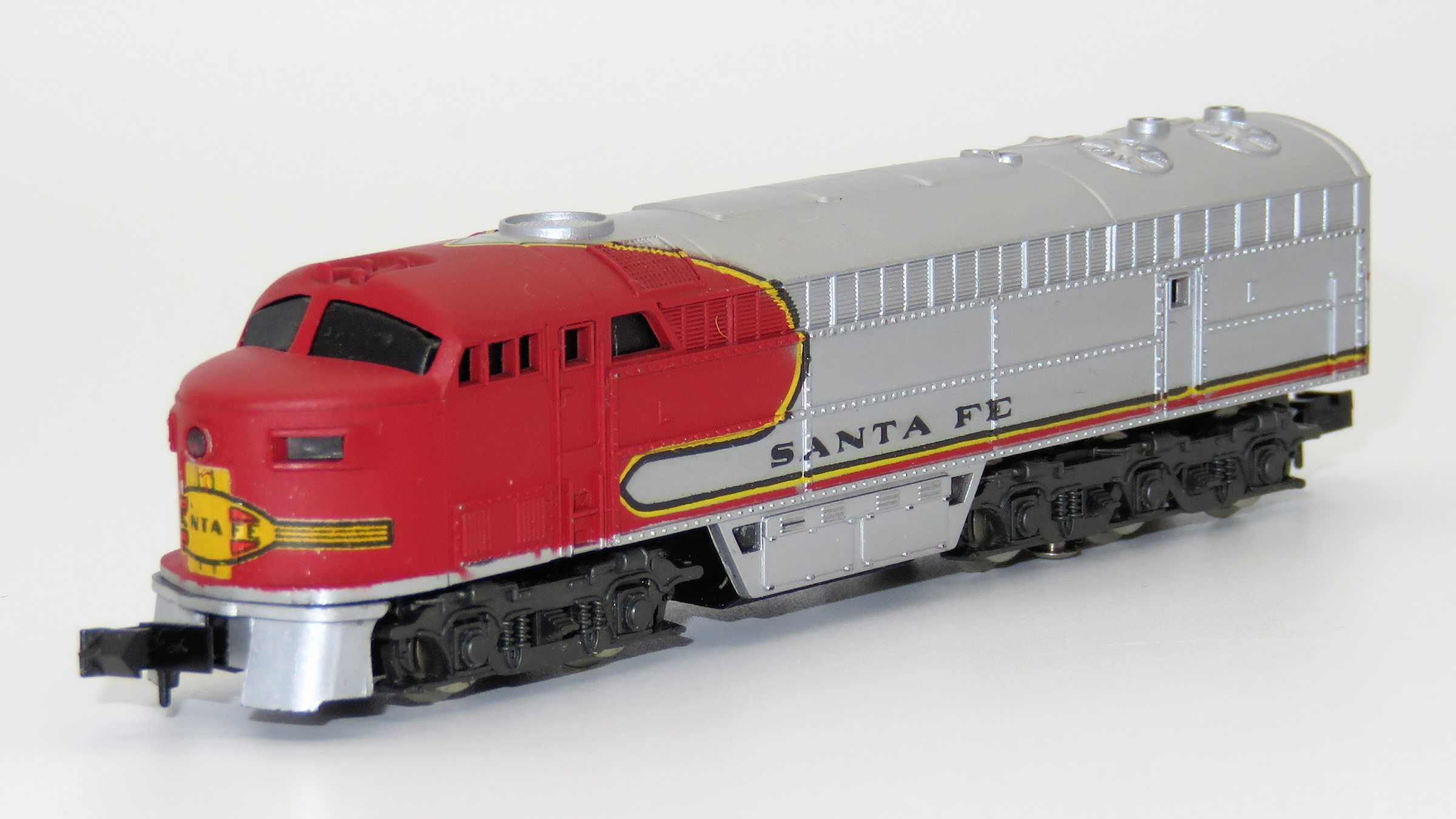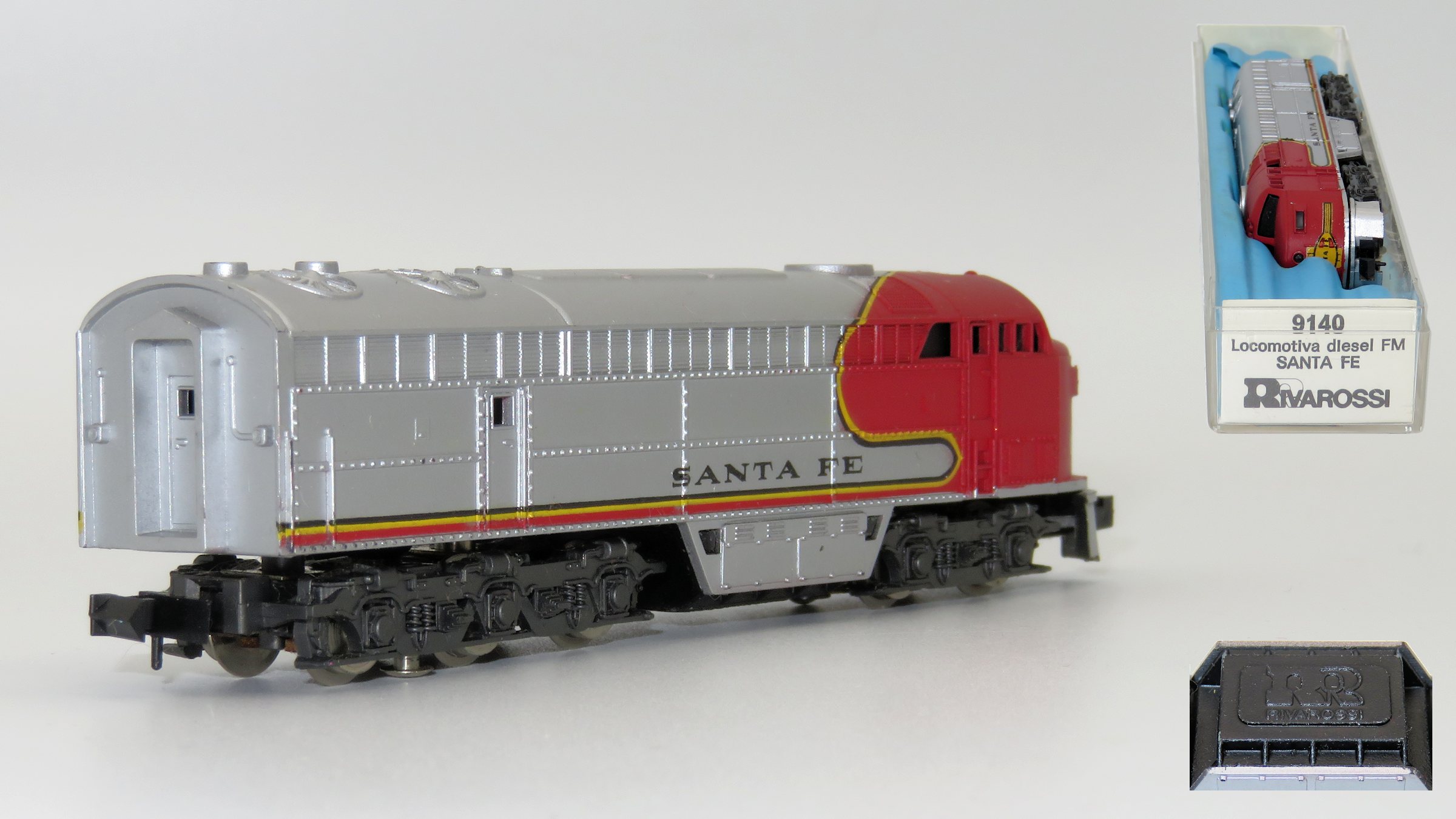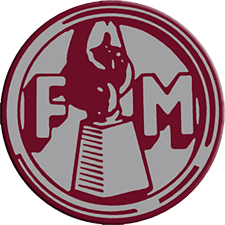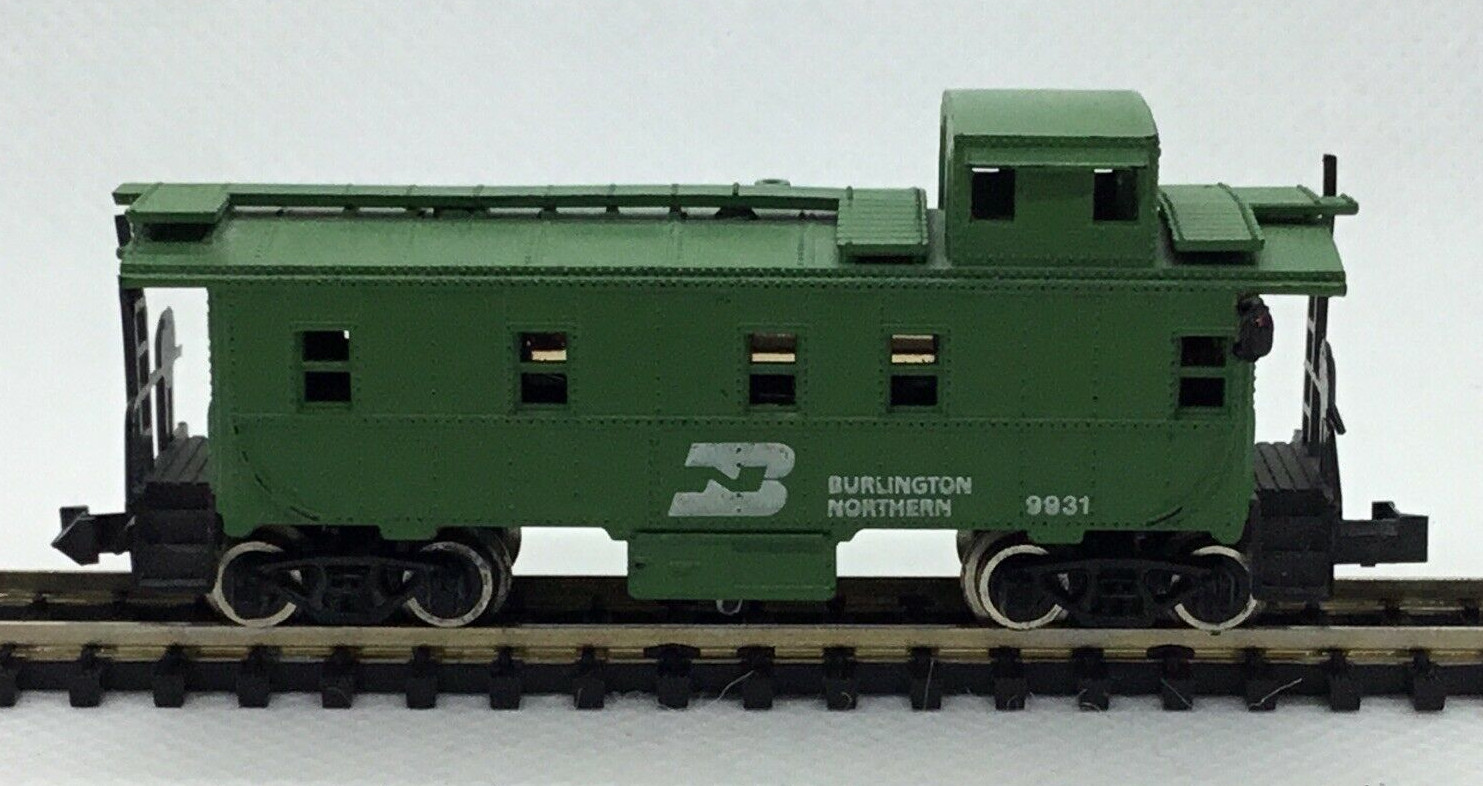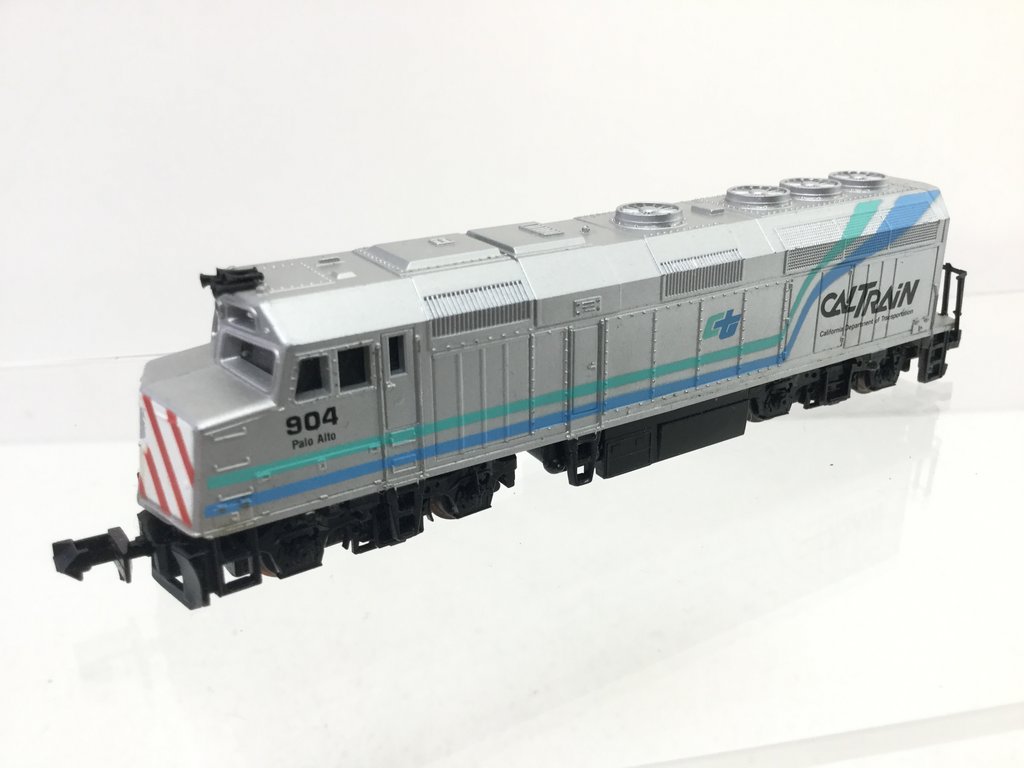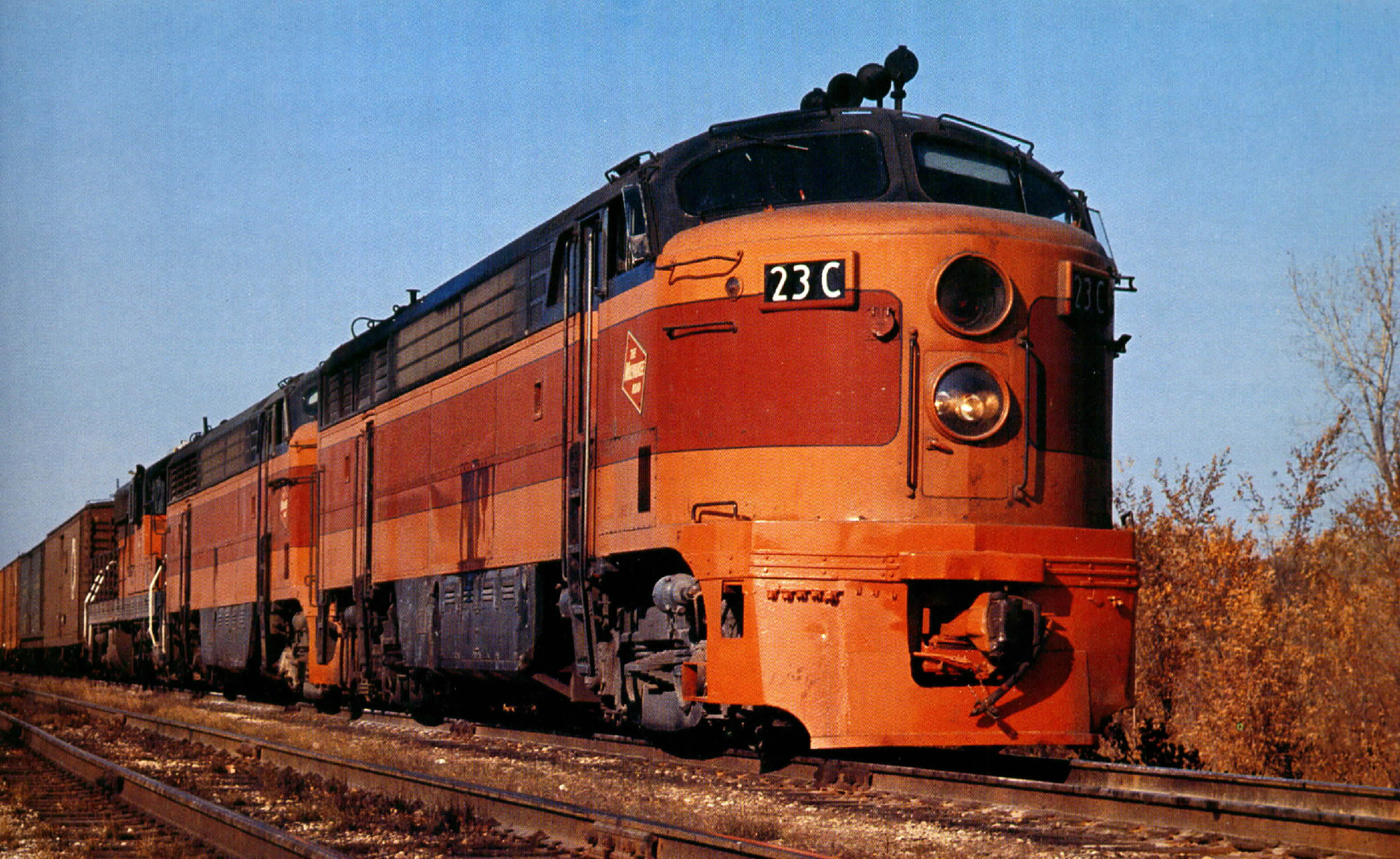Specific Item Information: Frame and Motor labeled "Rivarossi".
Model Information: Introduced in 1967. Discontinued a decade later.
Pickup from rear truck while propulsion from front truck.
Vertically mounted 3 pole motor.
Either made by Rivarossi or Mehano, just look at the bottom of the fuel tank: "Atlas Made in Italy by RR" or "Atlas Yugoslavia".
Pickup from rear truck while propulsion from front truck.
Vertically mounted 3 pole motor.
Either made by Rivarossi or Mehano, just look at the bottom of the fuel tank: "Atlas Made in Italy by RR" or "Atlas Yugoslavia".
DCC Information: Obviously DCC nothing.
Prototype History: The Consolidated line, or C-line, was a series of diesel-electric railway locomotive designs produced by Fairbanks-Morse and its Canadian licensee, the Canadian Locomotive Company. Individual locomotives in this series were commonly referred to as “C-liners”. A combined total of 165 units (123 cab-equipped lead A units and 42 cabless booster B units) were produced by F-M and the CLC between 1950 and 1955.
The C-Liners replaced FM's earlier cab model the Erie-Built, which proved only marginally successful at best. The updated version of FM's cab locomotives did not feature a carbody nearly as elegant as the former, which sported a European look. It was offered for either passenger or freight (with four or five axles) service and intended to compete against Electro-Motive's (EMD) popular E and F series as well as Alco's FA and PA models. Unfortunately, the C-Liners saw about the same level of success as the Erie-Builts and FM canceled the line after only a few years of production.
All of the designs were based on a common 56 ft 3 in (17.15 m) carbody, but the customer could choose cab or booster units equipped with 1,600 hp (1.19 MW), 2,000 hp (1.49 MW), or 2,400 hp (1,800 kW) opposed piston engine prime movers. Each option was also offered in both passenger and freight configurations.
All freight units, and the CLC-built Model CPA/B-16-4 were designed with a B-B wheel arrangement, while passenger units (in addition to having different gearing) featured an unusual B-A1A wheel configuration, as the rear truck required an extra unpowered axle to help distribute the weight of the steam generator.
The models produced comprise: CFA-16-4 (cabs) and CFB-16-4 (cabless boosters), CFA-20-4 (cabs) and CFB-20-4 (cabless boosters), CPA-20-5 (cabs), CPA-24-5 (cabs), CPA-16-4 (cabs), CPA-16-5 (cabs) and CPB-16-5 (cabless boosters).
Using the CFA16-4 as an example the "C" referred to cab unit, "F" listed it for freight service, "A" was a designation for A unit, "16" was short for 1,600 hp, and "4" was the number of axles it carried.
From Wikipedia
Read more on American-Rails.com
The C-Liners replaced FM's earlier cab model the Erie-Built, which proved only marginally successful at best. The updated version of FM's cab locomotives did not feature a carbody nearly as elegant as the former, which sported a European look. It was offered for either passenger or freight (with four or five axles) service and intended to compete against Electro-Motive's (EMD) popular E and F series as well as Alco's FA and PA models. Unfortunately, the C-Liners saw about the same level of success as the Erie-Builts and FM canceled the line after only a few years of production.
All of the designs were based on a common 56 ft 3 in (17.15 m) carbody, but the customer could choose cab or booster units equipped with 1,600 hp (1.19 MW), 2,000 hp (1.49 MW), or 2,400 hp (1,800 kW) opposed piston engine prime movers. Each option was also offered in both passenger and freight configurations.
All freight units, and the CLC-built Model CPA/B-16-4 were designed with a B-B wheel arrangement, while passenger units (in addition to having different gearing) featured an unusual B-A1A wheel configuration, as the rear truck required an extra unpowered axle to help distribute the weight of the steam generator.
The models produced comprise: CFA-16-4 (cabs) and CFB-16-4 (cabless boosters), CFA-20-4 (cabs) and CFB-20-4 (cabless boosters), CPA-20-5 (cabs), CPA-24-5 (cabs), CPA-16-4 (cabs), CPA-16-5 (cabs) and CPB-16-5 (cabless boosters).
Using the CFA16-4 as an example the "C" referred to cab unit, "F" listed it for freight service, "A" was a designation for A unit, "16" was short for 1,600 hp, and "4" was the number of axles it carried.
From Wikipedia
Read more on American-Rails.com
Road Name History: The Atchison, Topeka and Santa Fe Railway (reporting mark ATSF), often abbreviated as Santa Fe or AT&SF, was one of the larger railroads in the United States. Chartered in February 1859, the railroad reached the Kansas-Colorado border in 1873 and Pueblo, Colorado, in 1876. To create a demand for its services, the railroad set up real estate offices and sold farm land from the land grants that it was awarded by Congress. Despite the name, its main line never served Santa Fe, New Mexico, as the terrain was too difficult; the town ultimately was reached by a branch line from Lamy.
The Santa Fe was a pioneer in intermodal freight transport, an enterprise that (at one time or another) included a tugboat fleet and an airline (the short-lived Santa Fe Skyway). Its bus line extended passenger transportation to areas not accessible by rail, and ferryboats on the San Francisco Bay allowed travelers to complete their westward journeys to the Pacific Ocean. The ATSF was the subject of a popular song, Harry Warren & Johnny Mercer's "On the Atchison, Topeka and the Santa Fe", written for the film, The Harvey Girls (1946).
The railroad officially ceased operations on December 31, 1996, when it merged with the Burlington Northern Railroad to form the Burlington Northern & Santa Fe Railway.
Read more on Wikipedia.
The Santa Fe was a pioneer in intermodal freight transport, an enterprise that (at one time or another) included a tugboat fleet and an airline (the short-lived Santa Fe Skyway). Its bus line extended passenger transportation to areas not accessible by rail, and ferryboats on the San Francisco Bay allowed travelers to complete their westward journeys to the Pacific Ocean. The ATSF was the subject of a popular song, Harry Warren & Johnny Mercer's "On the Atchison, Topeka and the Santa Fe", written for the film, The Harvey Girls (1946).
The railroad officially ceased operations on December 31, 1996, when it merged with the Burlington Northern Railroad to form the Burlington Northern & Santa Fe Railway.
Read more on Wikipedia.
Brand/Importer Information: Rivarossi was one of the world's most famous Italian manufacturers of model railways. Rivarossi was founded in 1945 by Alessandro Rossi with Antonio Riva. In the 1990s Rivarossi acquired Lima (1992), Arnold (1995) and Jouef (1996). In 2003, after several years of managerial and financial vicissitudes, Rivarossi ceased its activities.
In 2004 Hornby Railways plc acquired assets from Rivarossi, in particular the brands Arnold, Jouef, Rivarossi and Lima. Since 2006 products are sold again under these brand names, with product manufactured in China. For complete information, visit Rivarossi Memory (mostly in Italian with some sections available in English).
In 2004 Hornby Railways plc acquired assets from Rivarossi, in particular the brands Arnold, Jouef, Rivarossi and Lima. Since 2006 products are sold again under these brand names, with product manufactured in China. For complete information, visit Rivarossi Memory (mostly in Italian with some sections available in English).
Item created by: klausnahr on 2021-01-05 18:04:19
If you see errors or missing data in this entry, please feel free to log in and edit it. Anyone with a Gmail account can log in instantly.
If you see errors or missing data in this entry, please feel free to log in and edit it. Anyone with a Gmail account can log in instantly.


